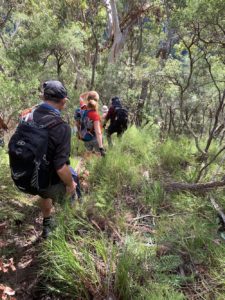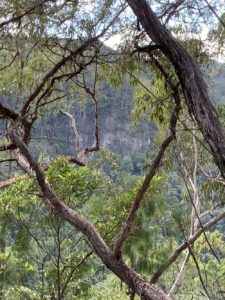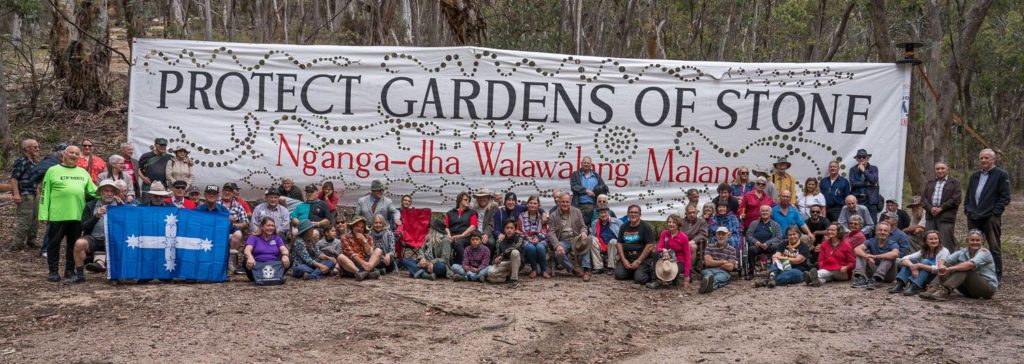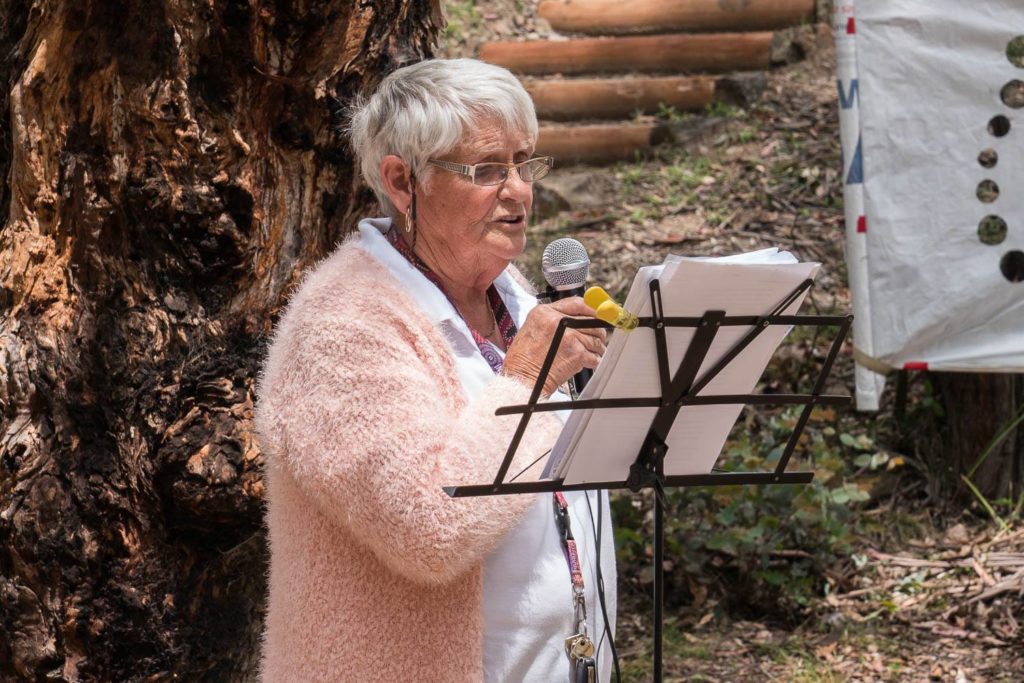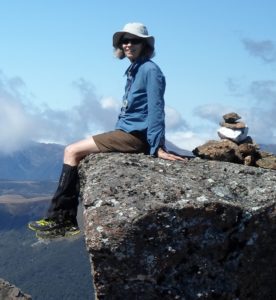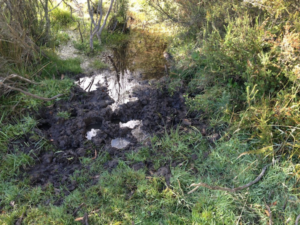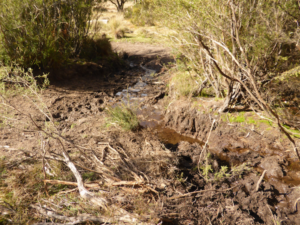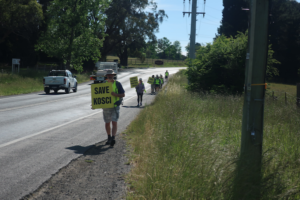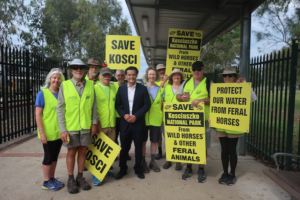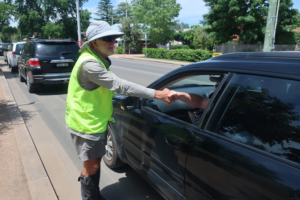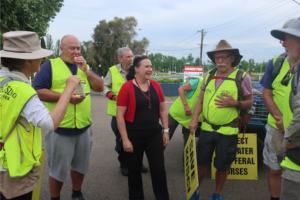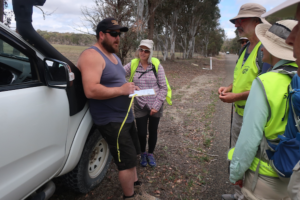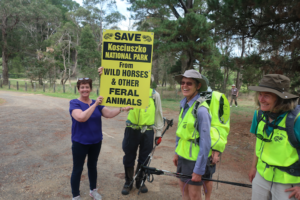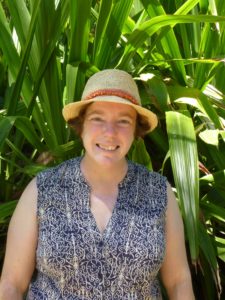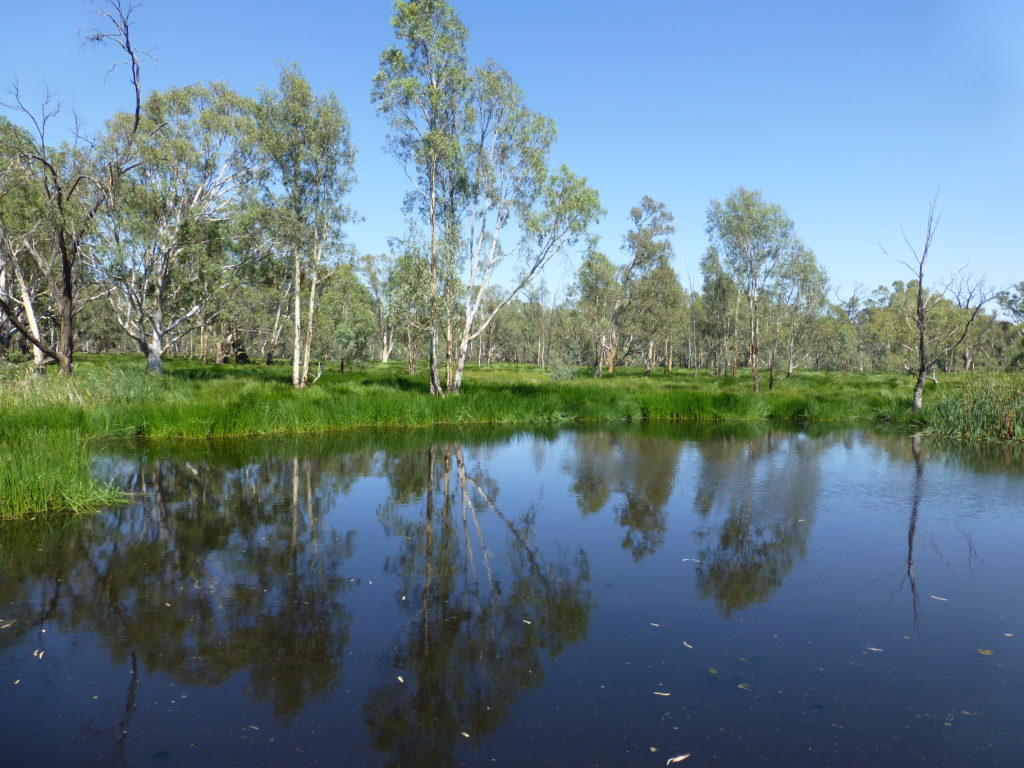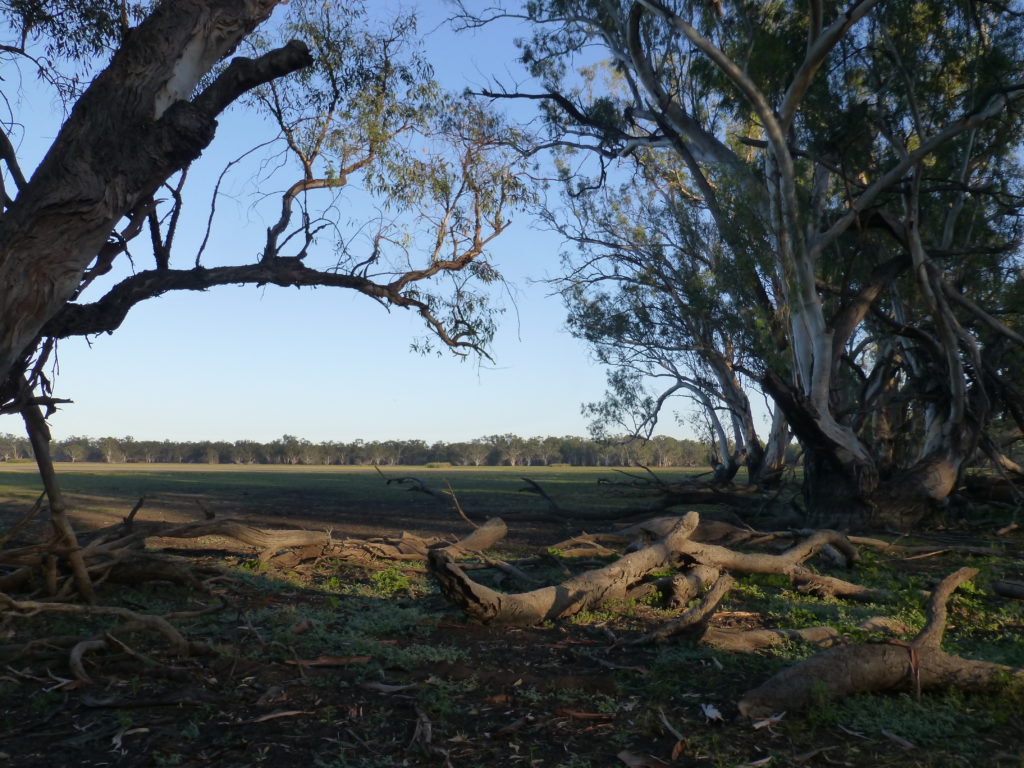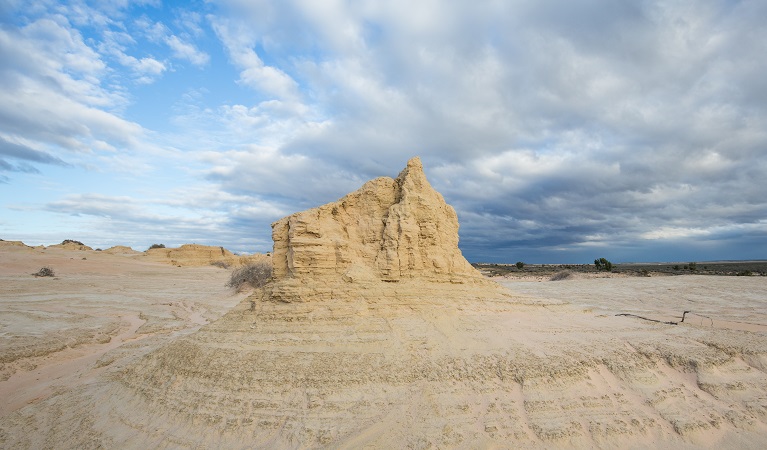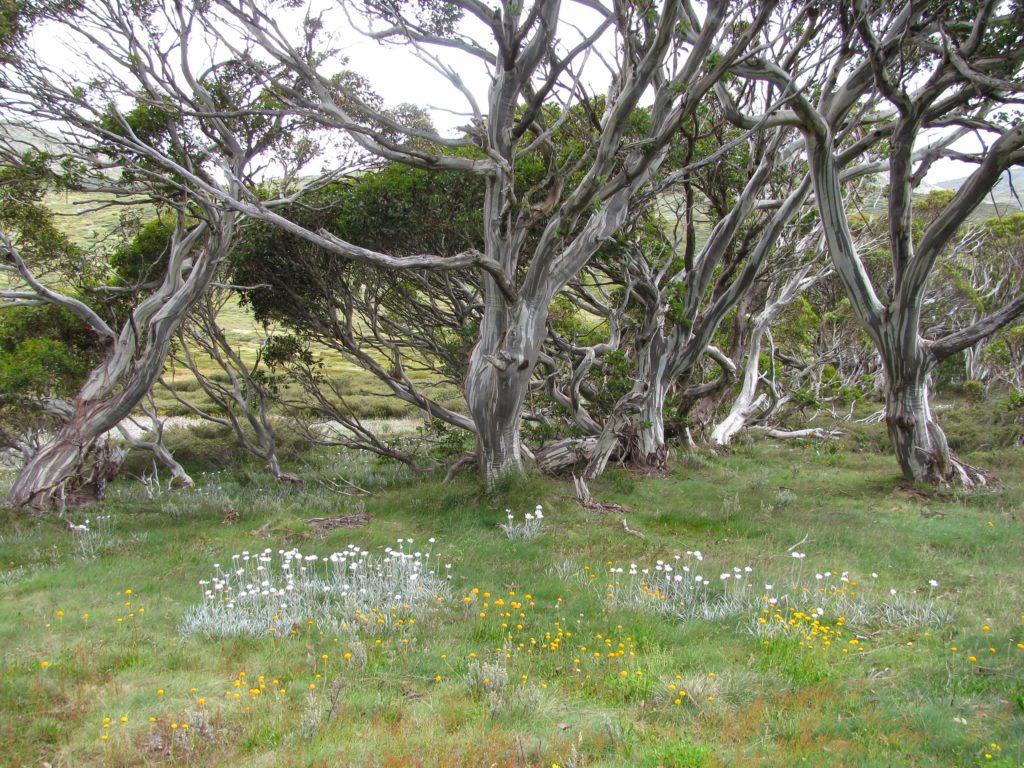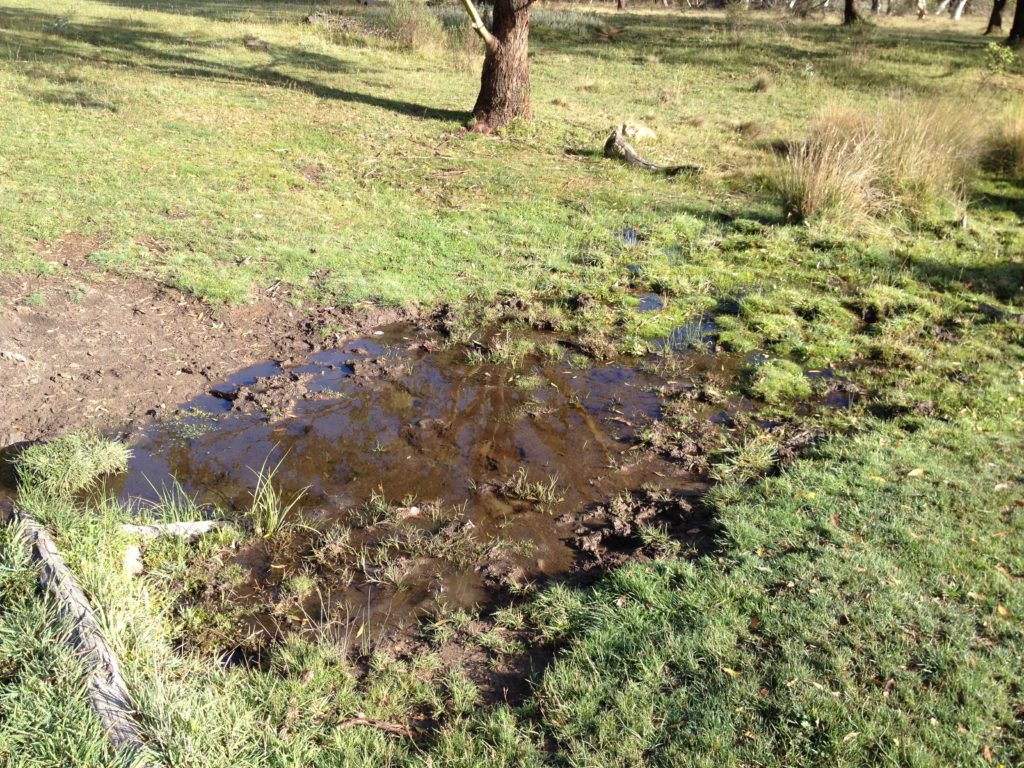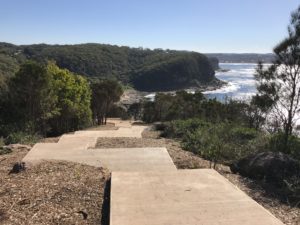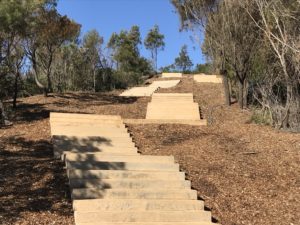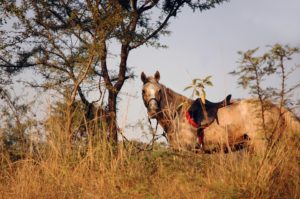
Most of the 200 Save Kosci walkers at the summit of Mt Kosciuszko
The Save Kosci walk ended on Saturday with amazing scenes as around two hundred walkers arrived at Rawsons Pass and headed to the summit of Mt Kosciuszko. The Save Kosci hired helicopter carrying Channel 7 and the Canberra Times circled the summit several times while we chanted ‘It’s a Park not a paddock’ and excitedly waved our arms off. The helicopter then took the media on a tour of undamaged and severely-damaged sites in the national park.
To reduce pressure on the alpine vegetation near the summit, we returned to the paved area at Rawsons Pass, where Andrew Cox, CEO of the Invasive Species Council, presented certificates to the five full-distance walkers – Marg Sharp, Alan Laird, Tom Vaughan, Paul Millgate and Donna Powell. And kindly gave me a thank-you certificate as well.
Sympathetic newspaper articles – in the Weekend Australian, the Canberra Times, the online editions of the SMH and Brisbane Times, and in the Guardian – and an interview on ABC Radio South East, were triggered by the last day of the walk. A Channel 7 feature is still in preparation and will air in January.
Thanks to the amazing support from our communities, the Save Kosci walk has achieved many things:
- The 2 weeks of the walk through the electorate of Mr Barilaro indicated that the majority of Monaro voters support Save Kosci’s aims. Although there were a few negative comments on social media and from passers-by, the vast majority of reactions were very positive. They ranged from thumbs-up from passing cars to home-made cakes. The promised confrontations and ‘you’ll be run out of town’ comments on some social media sites did not lead to anything.
- The numbers at the protest in Queanbeyan on 22nd November – nearly 150 of us and just 17 brumby advocates – were further evidence that Save Kosci represents a majority view.
- Media coverage has been extensive, especially in regional media, thanks to the work of Cynthia Burton. The list at the foot of this post relates to coverage triggered by the Save Kosci walk; other excellent coverage from releases issued by our umbrella organisation, Reclaim Kosci, on horses starving from over-population and on the November 8th science conference, ensured that the issue of feral horse damage in Kosciuszko National Park (KNP) has been repeatedly in the news
- We have had a lively presence on Facebook and Twitter, thanks to Terrylea Reynolds and Cynthia Burton
- Because of the walk, we were able to put our case face-to-face to influential people including Penny Sharpe (Deputy Leader of the NSW Labor Party), Mike Kelly (member for the federal seat of Eden-Monaro), Anoulack Chanthivong (member for the state seat of Macquarie Fields), Greg Warren (member for the state seat of Campbelltown), Sally Quinnell (Labor candidate for the state seat of Camden), Ursula Stephens (Labor candidate for the state seat of Goulburn), Bryce Wilson and Peter Marshall (Labor and Greens candidates for the state seat of Monaro), John Castellari (Councillor Snowy-Monaro Regional Council), Pru Goward, member for the state seat of Goulburn, Tim de Mestre (National Party Member and former Chair of Chairs of the Local Land Services Board) and Tara Cheyne (MLA, ACT)
- We were welcomed to country by Indigenous elders Wally Bell (Ngunnawal) and Aunty Deanna (Ngarigo); Uncle Max Harrison (Yuin) attended the start of the walk and we also had supportive contact with the Wingecarribee Aboriginal Community & Cultural Centre.
- We have nearly 1000 signatures on our petition to the state parliament of NSW; a good start towards our aim of 10,000 signatures by end of March 2019.
- The walkers have forged new friendships, and once the blisters heal, will have many happy memories. Many ‘quiet bushwalkers’ have discovered environmental activism.
What’s next?
Now that the Save Kosci walk has successfully concluded, the focus is shifting to raising awareness of the feral horse issue prior to the NSW elections, and to the paper petition. (The NSW Parliament does not accept electronic petitions.)
I am looking for volunteers willing to help get petition signatures, through fellow club members and friends and/or staffing petition-signing tables at local shopping centres. Please contact me if you can help: lbgroom@gmail.com or 0473 919 441
Reclaim Kosci will also continue the campaign through their website and on Facebook.
THANK YOU ALL! The full distance and longer-distance walkers have been overwhelmed by your support.
Linda Groom
Convenor, Save Kosci Inc
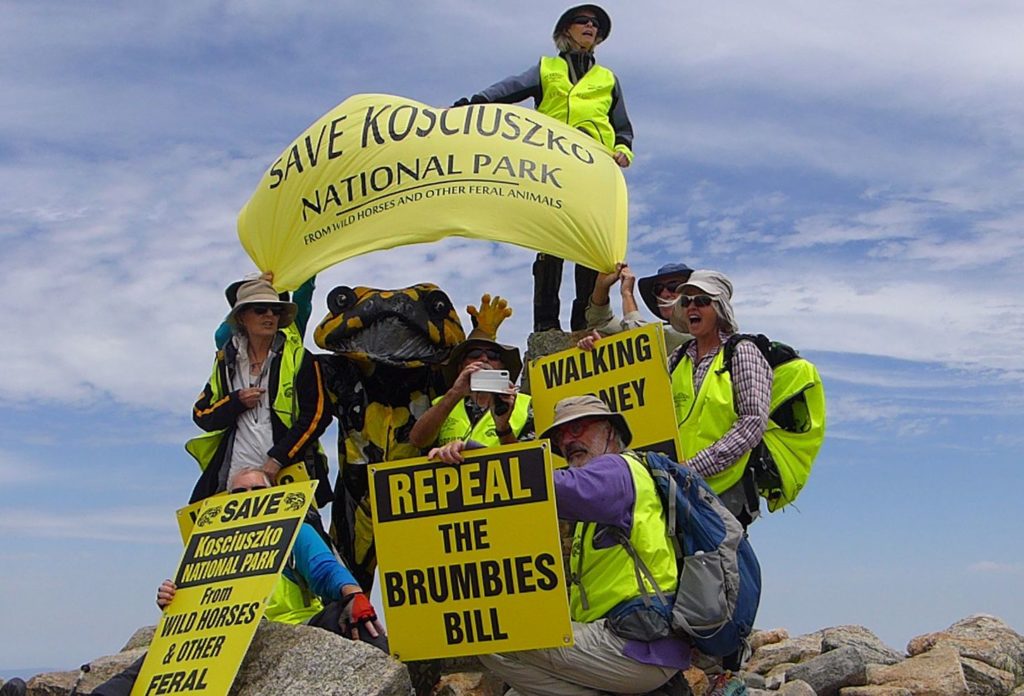
Linda Groom, Corroboree frog, and Save Kosci through walkers on the summit of Mt Kosciuszko
***********
Media coverage included:
19 November
Queanbeyan Age/Chronicle:
Brett McNamara article with direct reference/link to Save Kosci –
https://www.queanbeyanagechronicle.com.au/story/5764506/park-becomes-a-paddock/
Canberra City News:
https://citynews.com.au/2018/hundreds-walk-for-kosci-repeal/
22 November
Queanbeyan protest, Win tv (ch 10) and ch 9:
https://www.facebook.com/9NewsCanberra/videos/1053616341513761/
Win News
ABC radio SE NSW:
Interview with Linda Groom on hourly repeating news bulletin (transcript/recording not available)
Canberra Weekly:
‘Marching for Kosciuszko’ (attached)
28 November
Monaro Post:
‘Brumby Bill Rally in Queanbeyan’ (attached)
3 December
ABC radio SE NSW, Breakfast with Simon Lauder (transcript/recording unavailable):
Information on SK and extract from interview with through walker Tom Vaughan included in item on feral horse issues
ABC radio SE NSW, the Statewide Drive (transcript/recording unavailable):
Live interview with through walker Alan Laird
6 November:
Southwest Voice,
http://www.southwestvoice.com.au/why-save-kosci-campaign-resonates-in-our-neck-of-the-woods/
Around 8 November,
ABC Radio Illawarra Breakfast with Melinda James,
Pre-recorded interview with Linda Groom – not available
13 November
Radio 2ST Bowral interview with walker Tom Vaughan,
Website post available but not recording of interview itself:
https://www.2st.com.au/news/highlands-news/128943-save-kosci-walkers-pass-through-the-highlands
14 November,
ABC Radio Southeast NSW Breakfast with Simon Lauder:
Interview with walker Marg Sharp – no recording available
Early November : Milton Ulladulla Times
Story of Milton bushwalkers about to join segment of walk. Must subscribe to paper to read full story.
https://www.ulladullatimes.com.au/story/5757042/bushwalkers-join-campaign-to-highlight-wild-horse-law/
Early November: Southern Highland News,
Story of visit of walkers to bush regeneration site on property of local Exeter residents,
https://www.southernhighlandnews.com.au/story/5758046/marchers-on-a-mission-to-protect-park/?src=rss
GUEST BLOG by Linda Groom, Convenor, Save Kosci Inc, and inspiration behind the Save Kosci Walk

